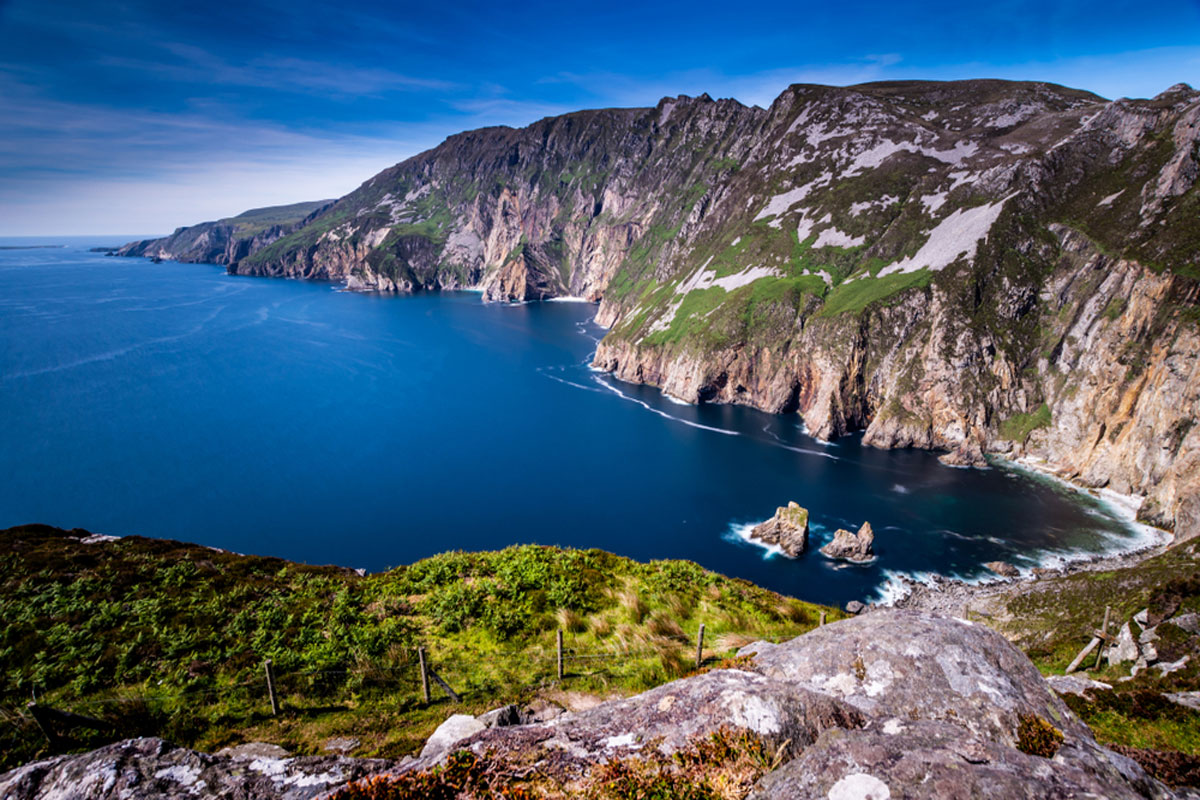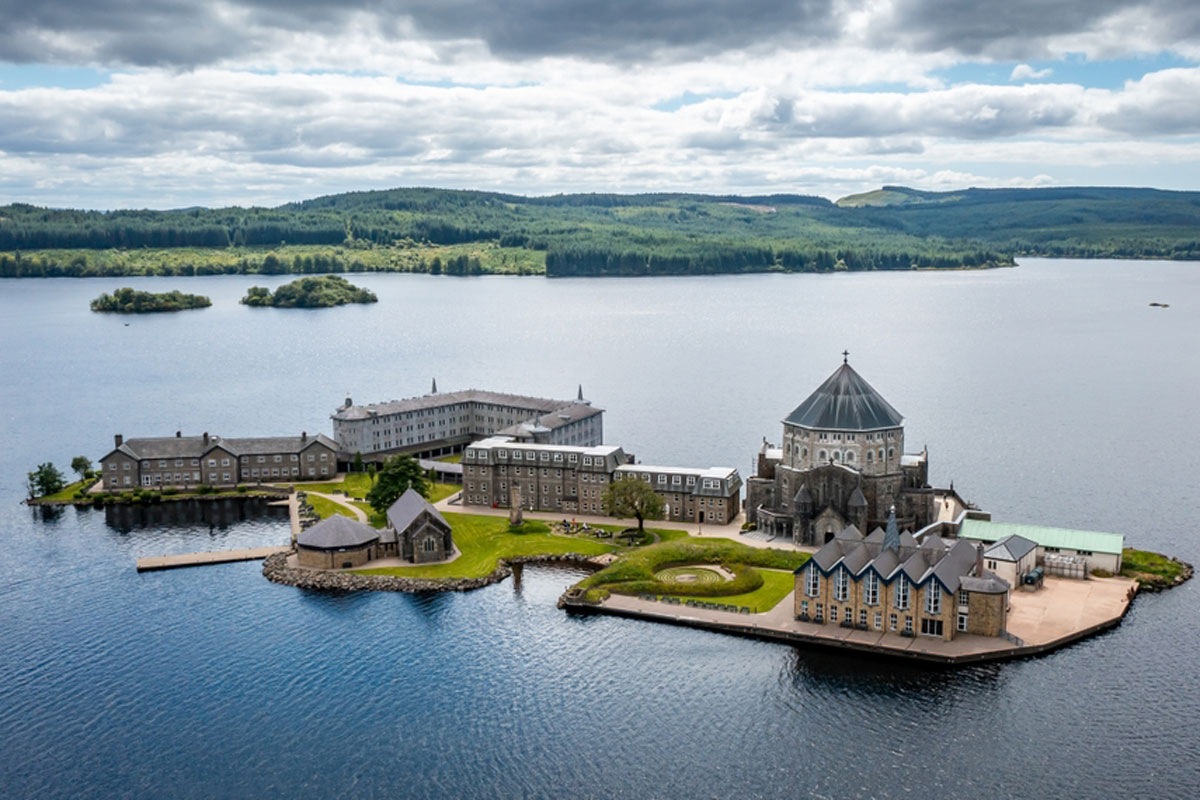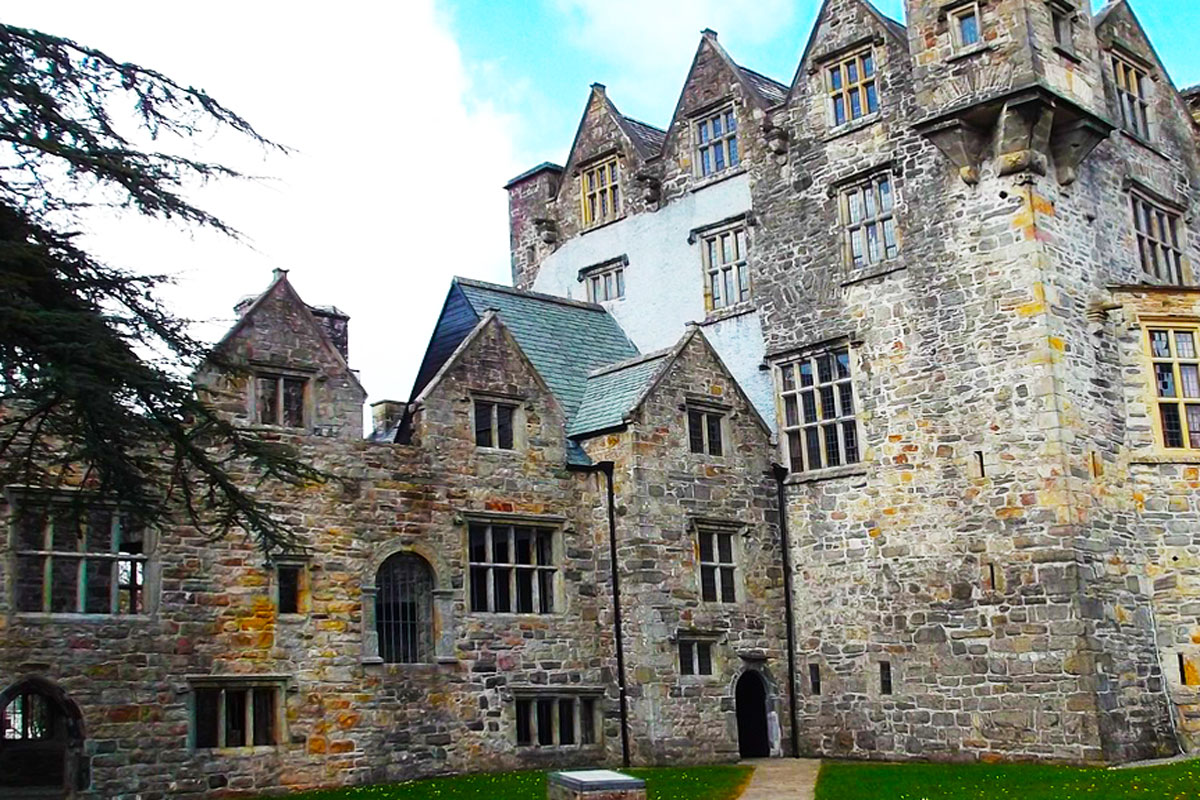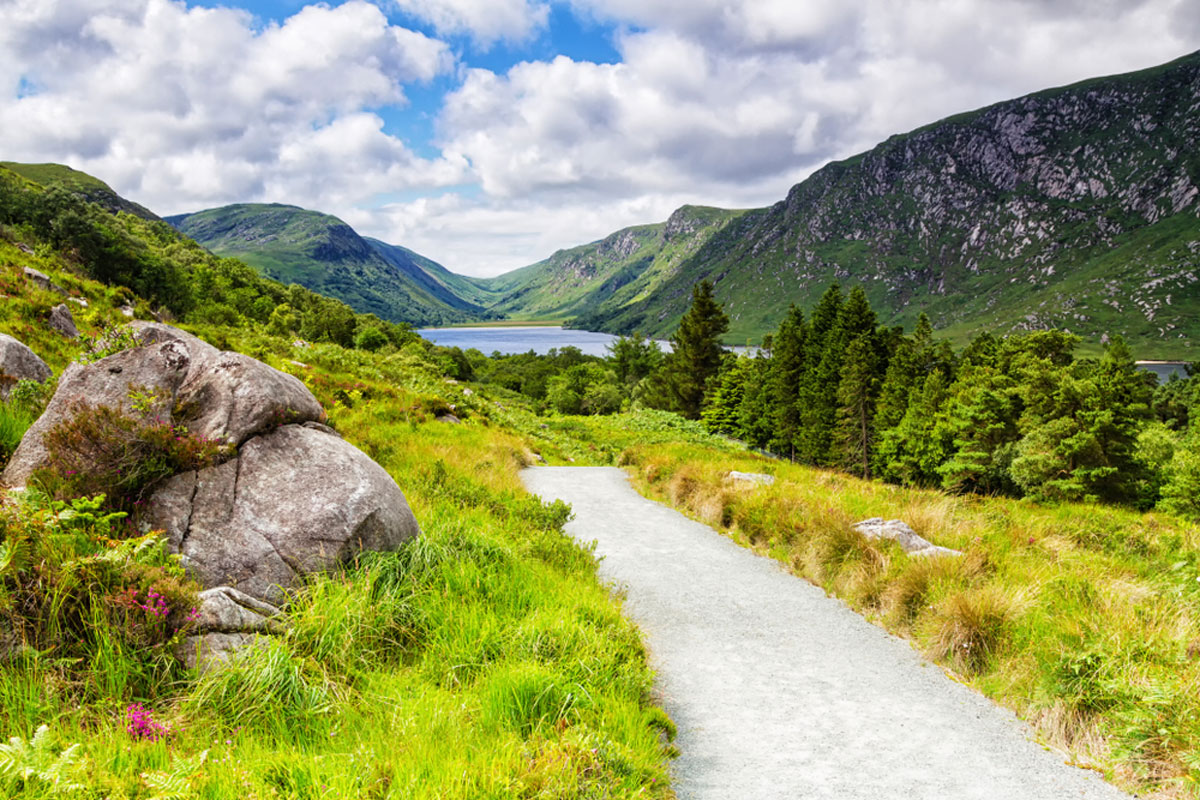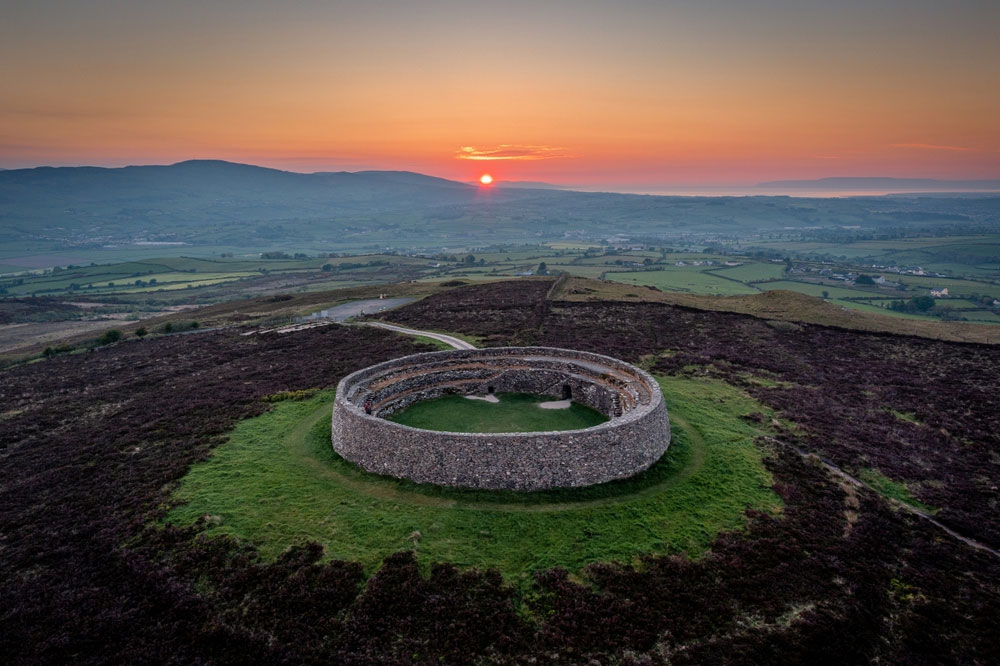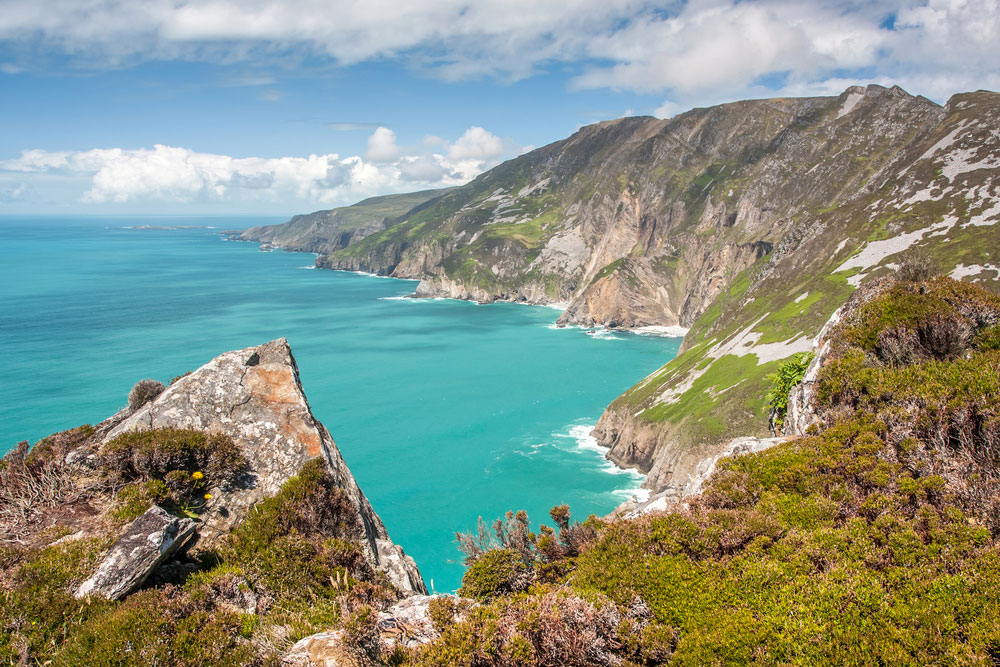An Introduction to Slieve League
Standing majestically on Ireland’s Wild Atlantic Way, Slieve League (or Sliabh Liag in Irish) is a breathtaking natural wonder that captivates visitors from across the globe. These awe-inspiring sea cliffs, located in County Donegal, rise approximately 600 meters (1,972 feet) above the Atlantic Ocean, making them among the tallest accessible sea cliffs in Europe. Often overshadowed by the Cliffs of Moher, Slieve League offers an equally dramatic yet far more serene experience, appealing to adventurers, nature enthusiasts, and those seeking tranquility in the face of nature’s grandeur.
A Land Steeped in History and Mythology
Slieve League is more than just a geological marvel; it is a place imbued with rich history and folklore. The name “Sliabh Liag” translates to “Mountain of Stones,” hinting at its rugged terrain and ancient heritage. The cliffs have long been a source of inspiration for local legends, including tales of early Christian monks who sought solace in the area’s isolation. Ruins of ancient stone huts, known as “clocháns,” dot the landscape, serving as silent witnesses to a time when the cliffs were a place of spiritual reflection.
Geological Splendor
The cliffs’ towering height and sheer vertical drop into the Atlantic are the result of millennia of geological activity. The exposed rock layers tell a story that spans millions of years, with unique formations that showcase the powerful forces of erosion and tectonic activity. The dramatic interplay of light and shadow on the cliffs, especially at sunrise and sunset, adds a mesmerizing dimension to the experience.
Why Slieve League?
Unlike more crowded tourist attractions, Slieve League offers a sense of untouched beauty and remoteness. The area’s relative inaccessibility ensures a quieter, more intimate connection with nature. Whether you are an avid hiker, a photography enthusiast, or someone looking to marvel at Ireland’s rugged coastline, Slieve League delivers an unforgettable encounter with the natural world.
Hiking Routes and Viewpoints
Slieve League offers some of the most rewarding hiking experiences in Ireland, with panoramic views of the Atlantic Ocean, dramatic cliff faces, and an untouched natural environment. Whether you’re an experienced hiker or a casual adventurer, the cliffs cater to all levels of exploration. Below are the best routes and viewpoints to help you experience the grandeur of Slieve League.
1. Bunglass Viewing Platform
If you’re short on time or prefer a less strenuous option, the Bunglass Viewing Platform is a must-visit. Easily accessible by car, this vantage point offers stunning views of the cliffs without requiring a hike. From here, you can marvel at the sheer vertical drop of the cliffs and watch as the waves crash far below. On a clear day, you can even spot the Sligo Mountains and Donegal Bay in the distance.
2. The Pilgrim’s Path
For a more immersive experience, the Pilgrim’s Path (also known as Casán na Naomh) is a moderate hiking route steeped in history. This ancient trail was once used by early Christian monks seeking solitude. Starting near Teelin village, the path gradually ascends through a rugged landscape of heather and rocks, culminating in breathtaking views of the Atlantic and the surrounding hills.
- Distance: Approximately 5 km (3 miles) round trip.
- Difficulty: Moderate.
- Highlights: Historical significance, panoramic ocean views, and a sense of tranquility.
3. One Man’s Pass
For experienced hikers seeking a challenge, One Man’s Pass is an adrenaline-filled route that hugs the cliff’s edge. This narrow ridge trail connects the Pilgrim’s Path to the summit of Slieve League and requires a steady head and sure footing. While it’s not for the faint of heart, the rewards are unparalleled: sweeping views of the ocean on one side and dramatic cliffs on the other.
- Distance: Part of the Pilgrim’s Path extension.
- Difficulty: Challenging; not recommended in poor weather.
- Safety Note: Proper hiking boots are essential, and caution is advised due to the trail’s steep and exposed sections.
4. The Clifftop Walk
If you’d prefer a guided or self-paced stroll along the cliffs, the Clifftop Walk offers a more relaxed option. This route starts from the upper car park and follows a well-defined path along the top of the cliffs, providing stunning views of the coastline without the extreme exposure of One Man’s Pass.
- Distance: Variable, depending on how far you wish to explore.
- Difficulty: Easy to moderate.
- Highlights: Accessible for families and casual walkers, with plenty of photo opportunities.
Tips for a Safe and Enjoyable Hike
- Check the Weather: Slieve League is best enjoyed on a clear day, as fog and rain can obscure views and make trails slippery.
- Dress Appropriately: Wear layers and bring a waterproof jacket, as weather conditions can change rapidly.
- Plan Ahead: Some trails, like One Man’s Pass, are not suitable for beginners or young children. Research routes in advance and choose one that matches your fitness level.
- Leave No Trace: Respect the pristine environment by carrying out any waste and staying on designated paths.
Wildlife and Flora of Slieve League
Slieve League is more than just a visual spectacle; it is a haven for wildlife and a sanctuary for rare and hardy plants that thrive in its rugged environment. The cliffs’ unique location, where land meets the vast Atlantic, creates a diverse ecosystem that supports a wide array of species.
Birdlife: A Haven for Seabirds
The towering cliffs of Slieve League are an essential breeding ground for seabirds, making it a paradise for birdwatchers. The constant updrafts and the proximity to the ocean provide ideal conditions for nesting and hunting.
Birds You Might Spot:
- Puffins: These charming seabirds are occasional visitors during the breeding season. Look for their colorful beaks and waddling gait near grassy cliff edges.
- Razorbills and Guillemots: These black-and-white seabirds can often be seen perched on ledges or diving into the ocean for fish.
- Kittiwakes: With their sharp cries and elegant flight, these gull-like birds are common along the cliffs.
- Peregrine Falcons: Known for their incredible speed, peregrines hunt smaller birds in the area, making them a thrilling sight for observers.
Tips for Birdwatching:
Bring binoculars for a closer look, especially during spring and early summer when nesting activity is at its peak.
Marine Life: The Rich Atlantic Waters
The waters off Slieve League teem with marine life, and the cliffs offer spectacular vantage points for spotting ocean wildlife.
Marine Creatures to Watch For:
- Dolphins and Porpoises: Pods often swim close to shore, leaping gracefully through the waves.
- Basking Sharks: These gentle giants, the second-largest fish in the world, can sometimes be seen gliding near the surface in warmer months.
- Seals: Keep an eye on the rocky shores below for these playful and curious creatures.
Flora: Resilient and Rare
The windswept cliffs and rocky terrain create a challenging environment for plants, but many hardy species have adapted to survive. The flora of Slieve League adds vibrant colors to the landscape, especially during the warmer months.
Key Plant Species:
- Heather: This iconic plant blankets the area in purple hues during late summer, adding to the cliffs’ wild beauty.
- Thrift (Sea Pink): A small, delicate flower that grows in clusters along the rocky edges.
- Bog Cotton: With its fluffy white tufts, bog cotton thrives in the damp, peaty areas of the cliffs.
- Sea Campion: A low-growing plant with pale pink or white blossoms that clings to the cliff edges.
Conservation Note:
Many of these plants are fragile and slow-growing. Visitors are encouraged to admire them without picking or disturbing their natural habitats.
The Importance of Conservation
The ecosystem at Slieve League is a delicate balance, and efforts are in place to protect its flora and fauna. Responsible tourism plays a significant role in preserving the cliffs’ natural beauty for generations to come.
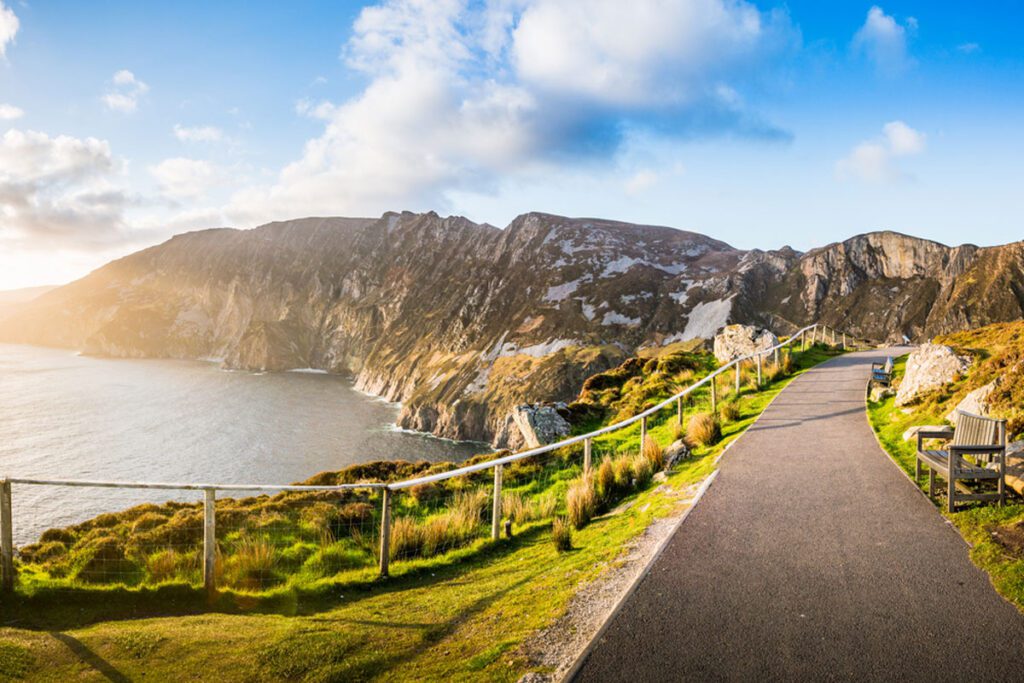
Cultural and Spiritual Significance
Slieve League is not only a marvel of natural beauty but also a site steeped in cultural heritage and spiritual meaning. From ancient legends to its role in early Christian history, these cliffs have long been a source of inspiration and reverence for locals and visitors alike.
1. Early Christian Roots
The isolation and ruggedness of Slieve League made it an ideal location for early Christian monks seeking solitude and connection with the divine. Remnants of this religious history remain visible today, including stone ruins believed to have been monastic dwellings, known as clocháns.
These monks are thought to have used the Pilgrim’s Path, a trail that winds up the cliffs, as a route for spiritual reflection. The path’s challenging terrain mirrored the monks’ ascetic commitment to hardship and simplicity.
2. Folklore and Legends
The cliffs are woven into Irish folklore, with tales that add a sense of mystery and wonder to their imposing presence.
Legends of the Cliffs:
- The Giant’s Chair: Local lore tells of a massive indentation in the cliffs, often referred to as the Giant’s Chair, said to have been left by a mythological giant resting by the sea.
- Fairy Folklore: The rugged peaks and hidden crevices of Slieve League are thought to be home to the Sí, or Irish fairies, who are believed to protect the cliffs and their natural beauty.
- Ancient Spirits: Some locals believe that the cliffs hold the spirits of those who lived and worked in the area for generations, guarding the land and sea.
3. Slieve League as a Pilgrimage Site
For centuries, Slieve League has been a destination for pilgrimage. Its spiritual resonance draws people seeking reflection, peace, and a deeper connection to nature. The Pilgrim’s Path is still walked today, not only for its stunning views but also as a symbolic journey of endurance and faith.
4. Maritime Heritage
The cliffs have also played a significant role in Ireland’s maritime history. Rising dramatically from the Atlantic, they served as a navigational landmark for fishermen and sailors. The waters below, while treacherous, were a rich source of fish and seaweed, vital to the survival of coastal communities.
5. Modern Cultural Significance
Today, Slieve League is a symbol of Ireland’s wild and untamed spirit. It has become a focal point for artists, poets, and musicians inspired by its natural beauty and the stories embedded in its landscape. Local festivals and events often celebrate the cliffs, showcasing their enduring significance to the people of Donegal.
Preserving the Legacy
Slieve League’s cultural and spiritual significance underscores the importance of respecting the cliffs and their history. Visitors are encouraged to engage with the stories of the cliffs while treading lightly on the land, ensuring this heritage is preserved for future generations.
Planning Your Visit to Slieve League
Visiting Slieve League is an unforgettable experience, but a little preparation goes a long way in ensuring you make the most of your trip. Whether you’re seeking adventure, history, or simply the chance to immerse yourself in Ireland’s natural beauty, this guide will help you plan a memorable visit.
1. Getting There
Slieve League is located in County Donegal, approximately 50 kilometers (31 miles) west of Donegal Town.
- By Car:From Donegal Town: Follow the N56 to Killybegs, then the R263 through Carrick village. Look for signposts directing you to the Slieve League Cliffs.
- Parking: Free parking is available at the lower car park. If you’re comfortable with narrow roads, you can drive to the upper car park for easier access to the Bunglass Viewing Platform
- By Public Transport: While public transport is limited, local bus services may operate routes to Carrick or Teelin. From there, you can arrange a taxi or enjoy a scenic walk to the cliffs.
2. Best Time to Visit
- Spring and Summer: The cliffs are most vibrant from April to September, with blooming flora, nesting seabirds, and longer daylight hours.
- Autumn and Winter: The off-season offers a quieter experience but comes with shorter days and potentially challenging weather.
- Time of Day: Visit early in the morning or late afternoon for softer light and fewer crowds. Sunset is particularly magical.
3. What to Bring
- Clothing: Wear sturdy hiking boots, waterproof gear, and layers to adapt to Donegal’s unpredictable weather.
- Essentials: Bring water, snacks, and sunscreen.
- Extras: Binoculars for birdwatching, a camera for the incredible views, and a map or guidebook for exploring the area.
4. Nearby Attractions
Enhance your trip by exploring the local area:
- Teelin Village: A charming village with traditional pubs and warm hospitality. Stop by for a pint or a hearty Irish meal.
- Kilcar Woolen Mill: Discover Donegal’s famous tweed and crafts at this family-run mill in nearby Kilcar.
- Silver Strand Beach: A stunning hidden cove located near Malin Beg, perfect for a peaceful detour.
- Glencolmcille Folk Village: Learn about Ireland’s rural history at this fascinating open-air museum.
5. Guided Tours
For those who prefer an expert touch, local guides offer tours that delve into the history, geology, and folklore of Slieve League. Guided boat tours are also available, providing a unique perspective of the cliffs from the sea.
6. Tips for a Safe and Enjoyable Visit
- Stay on Paths: Stick to marked trails to avoid damaging the environment or risking injury.
- Mind the Weather: Check forecasts before heading out, and avoid hiking in heavy rain or strong winds.
- Respect Nature: Leave no trace—carry out all waste and avoid disturbing wildlife.
- Support Local Businesses: Enjoy the hospitality of local shops, restaurants, and artisans to support the community.
Why Slieve League Deserves a Spot on Your Itinerary
Slieve League is a destination that combines breathtaking natural beauty with deep cultural and historical significance. Whether you spend hours hiking the trails, admiring the views from the Bunglass Platform, or soaking in the area’s rich heritage, you’ll leave with memories that last a lifetime.
Take the time to explore, reflect, and immerse yourself in the splendor of Ireland’s tallest accessible sea cliffs—it’s an experience like no other.
Natural Attractions
- Slieve League Cliffs – Among the highest sea cliffs in Europe, offering breathtaking views of the Atlantic Ocean.
- Glenveagh National Park – A stunning park with rugged mountains, pristine lakes, and the enchanting Glenveagh Castle.
- Malin Head – Ireland’s northernmost point, known for its dramatic coastal scenery and wildlife.
- Fanad Head Lighthouse – A picturesque lighthouse located on a scenic peninsula.
- Blue Stack Mountains – Perfect for hikers seeking challenging trails and spectacular vistas.
- Ards Forest Park – A tranquil forest park with sandy beaches, walking trails, and picnic spots.
Historical and Cultural Sites
- Donegal Castle – A beautifully restored 15th-century castle in the heart of Donegal Town.
- Grianán of Aileach – A hilltop stone fort offering panoramic views and a glimpse into ancient Irish history.
- Glencolmcille Folk Village – A living history museum depicting traditional Irish rural life.
- Doe Castle – A well-preserved castle with stunning views over Sheephaven Bay.
- Famine Memorial – A poignant tribute to those who suffered during the Great Famine.
Lakes and Water Activities
- Lough Eske – A serene lake surrounded by woodlands, ideal for fishing and kayaking.
- Lough Finn – Known for its trout fishing and scenic setting.
- River Finn – Popular for salmon fishing and riverside walks.
- Ballymastocker Bay – A Blue Flag beach perfect for swimming and relaxing.
Scenic Drives and Villages
- Atlantic Drive – A scenic coastal route showcasing Donegal’s rugged beauty.
- Inishowen Peninsula – A loop drive featuring stunning beaches, historic sites, and charming villages.
- Dungloe – Known for its traditional music and the Mary from Dungloe Festival.
- Ardara – Famous for its tweed-making heritage and friendly atmosphere.
Unique Experiences
- Tory Island – A remote island rich in folklore, accessible by ferry.
- Wild Atlantic Way – Explore Donegal’s section of this iconic coastal route.
- Donegal Craft Village – A hub for local artists and craftspeople creating traditional and modern pieces.
- Surfing at Bundoran – Known as Ireland’s surf capital, offering waves for all skill levels.
- Festivals and Events – Enjoy lively events such as the Donegal Bay and Bluestacks Festival and Earagail Arts Festival.
County Donegal offers a mix of dramatic landscapes, rich cultural heritage, and warm hospitality, making it a must-visit destination in Ireland.
Helpful Resources




